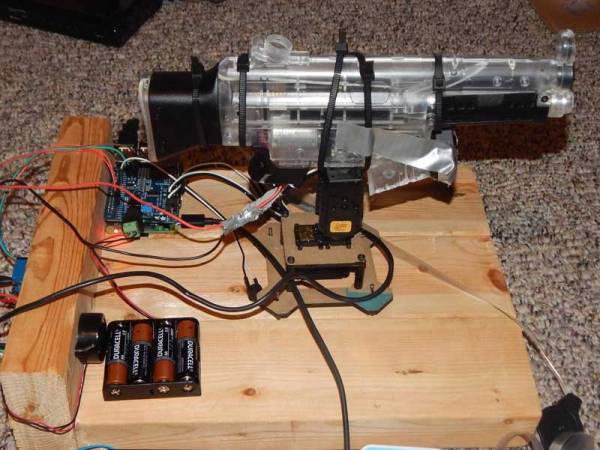
A Nerf Rival Nemesis MXVII-10K flywheel blaster is the core of the build, with a 100-round capacity of soft foam balls. Stepper motors are used to control a pan and tilt system to aim the blaster. It’s moved under instruction from a Raspberry Pi that uses machine vision algorithms running on a Coral USB accelerator to track targets in the bedroom. A relay board is then used to activate the blaster’s firing action, blasting any targets until they wake up.
[Vinnie] had plenty of fun during build, also showing the sentry gun off to his coworkers in the office. It’s a hard sentry to dodge, with the machine vision algorithm using a full-body tracking model, so merely covering one’s face won’t be enough to get away.
We’ve seen all kinds of sentry guns over the years, from those firing rubber bands to others spraying jets of water. Video after the break.
Continue reading “Robot Nerf Alarm Blasts You Awake With Foam”






















